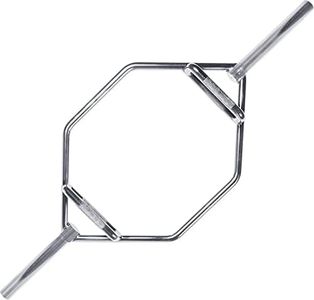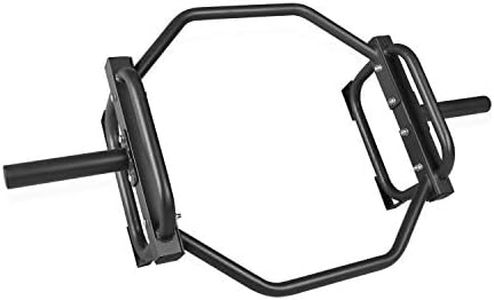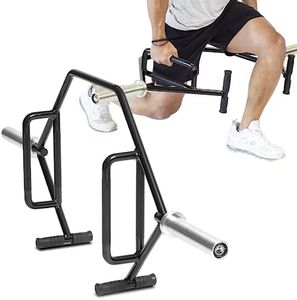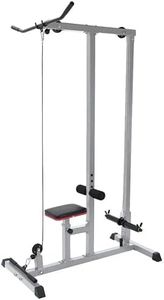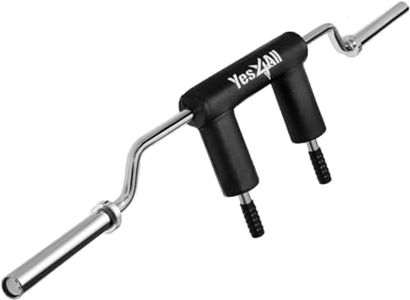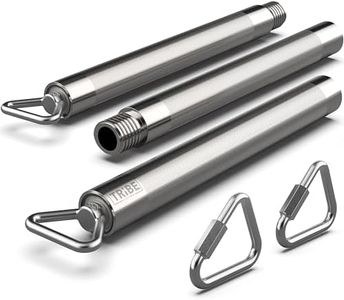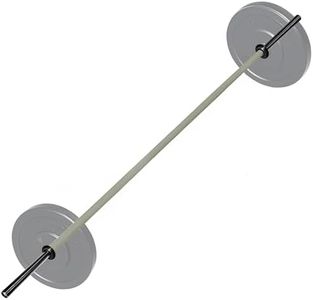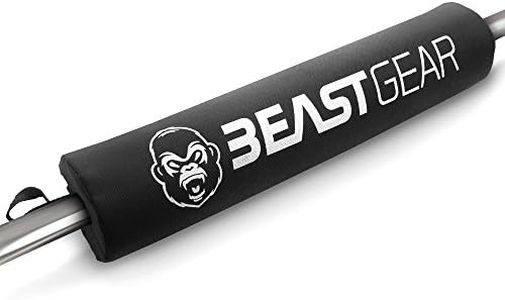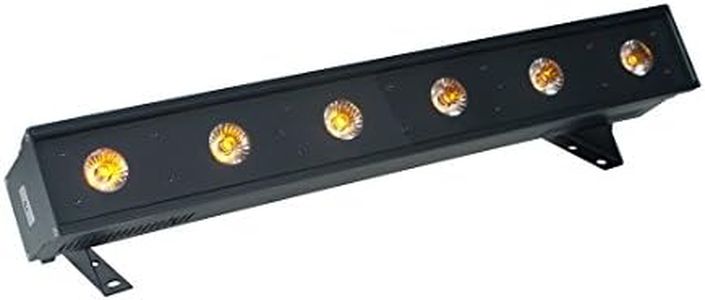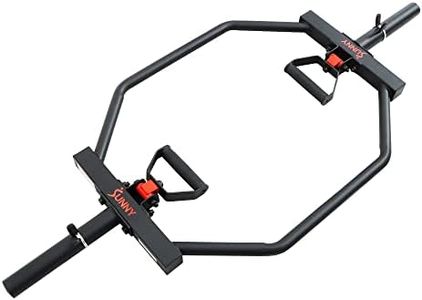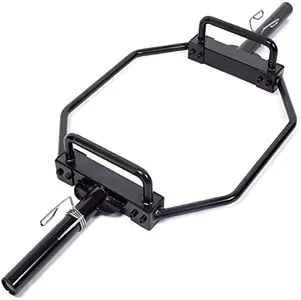10 Best Hex Bars 2025 in the United States
Our technology thoroughly searches through the online shopping world, reviewing hundreds of sites. We then process and analyze this information, updating in real-time to bring you the latest top-rated products. This way, you always get the best and most current options available.

Our Top Picks
Winner
CAP Barbell Mega Olympic Trap Bar, Deadlift Bar, Hex Bar with Combo Neutral Grips, Chrome - New Version (OBIS-91HC)
Most important from
636 reviews
The CAP Barbell Mega Olympic Trap Bar is a solid choice for anyone involved in strength training, especially those focused on deadlifts and powerlifting. With a robust weight capacity of 1000 lbs and a bar weight of 75 lbs, it can accommodate serious lifting sessions, making it suitable for both beginners and experienced lifters. The 32mm solid steel construction is durable and the chrome finish adds a touch of quality while preventing rusting, which is a definite plus for longevity.
One of the standout features is the combo neutral grip design. The 26-inch space between the grips allows for comfortable lifting and reduces strain on the back, which is a significant advantage for those worried about injury during heavy lifts. The knurling on the handles provides a secure grip, which is crucial when handling heavy weights.
In terms of dimensions, the bar measures 56 inches in length, which is manageable for most home gym setups, but those with limited space might want to ensure they have adequate room. The sleeves are 9 inches long, making it compatible with standard Olympic weight plates, which is great for versatility. For those looking to build strength and incorporate deadlifts into their routine, this trap bar provides a good mix of features and durability.
Most important from
636 reviews
CAP Barbell Olympic Hex Bar, Trap Bar, Shrug Bar, Deadlift Bar with Combo Grips, Chrome - New Version (OBIS-89HC)
The CAP Barbell Olympic Hex Bar is a robust and versatile piece of equipment designed for serious weightlifters. With a weight capacity of 750 pounds, it can handle heavy loads, making it suitable for both home and commercial use. The bar itself weighs 52 pounds and is constructed from 25mm solid steel with a durable chrome finish, ensuring longevity and resistance to wear and tear.
The hex bar's dimensions (56 inches in length and 24 inches in width) and the 25-inch gap between grip handles offer ample space for a variety of exercises, including deadlifts and shrugs, which can help build mass and strength in the legs, traps, back, and core. The knurled handles provide a secure grip, and the bar features both raised and flush neutral grips to accommodate different lifting preferences.
The 9-inch loadable sleeve length offers sufficient room for weight plates, and its compatibility with Olympic weight plates is a significant advantage for powerlifters. However, the bar's weight of 52 pounds might be slightly heavy for beginners to move around easily. The CAP Barbell Olympic Hex Bar is an excellent choice for those looking to enhance their strength training regimen with a durable and versatile piece of equipment.
CAP Barbell Olympic Trap Bar, Hex Bar, Shrug Bar, Deadlift Bar, Black, 50 inches
The CAP Barbell Olympic Trap Bar is a solid choice for those looking to enhance their weightlifting routine at home. With a maximum weight capacity of 500 pounds and a sturdy construction made from alloy steel, this hex bar offers the durability needed for various strength training exercises. It features a compact design, measuring 50 inches in length, which is great for home gym setups with limited space. The 9.5-inch loadable sleeve length allows for enough weight adjustments, making it versatile for different workouts.
One of the standout aspects of this bar is the neutral grip handle, designed to be comfortable and reduce strain on the back during lifts. This ergonomic feature can be particularly beneficial for users performing deadlifts or shrugs, as it promotes a healthier lifting posture. The incorporated feet also help protect floors and provide stability when loading and unloading weights, which adds to its safety during use.
There are some considerations to keep in mind. While it can handle up to 500 pounds, the bar itself weighs only 28 pounds, which might not provide enough heft for advanced lifters who prefer heavier base weights. Lastly, it is essential to confirm that this bar fits well with your specific workout routines and equipment, as it is designed for Olympic weights.
Buying Guide for the Best Hex Bars
Hex bars, also known as trap bars, are a type of weightlifting equipment used primarily for deadlifts, shrugs, and other strength training exercises. They are designed with a hexagonal shape that allows the user to stand in the center, providing a more balanced and ergonomic lifting position. When choosing a hex bar, it's important to consider several key specifications to ensure it meets your fitness goals and personal needs. Understanding these specs will help you make an informed decision and get the most out of your workouts.FAQ
Most Popular Categories Right Now
